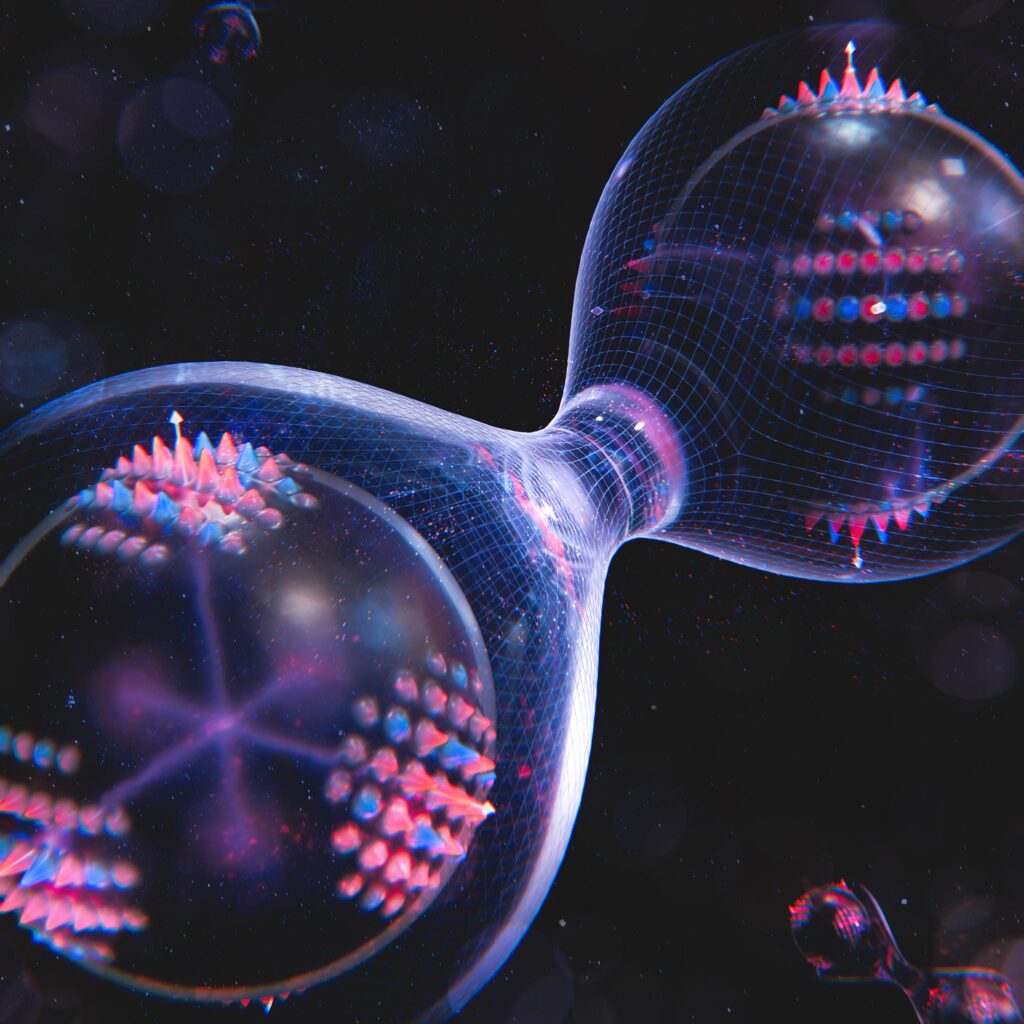Physicists at the University of Sydney have achieved a breakthrough in quantum computing by creating a universal logic gate inside a single atom.
Using a powerful error-correcting system known as the Gottesman-Kitaev-Preskill (GKP) code — often called the “Rosetta Stone” of quantum computing — they managed to entangle vibrations of a trapped ion. This achievement drastically reduces the number of physical qubits needed, tackling one of the biggest hurdles in scaling quantum computers and bringing practical, large-scale quantum machines closer to reality.
Battling Quantum Errors at Scale
Building a large, reliable quantum computer is one of science’s toughest challenges. The main obstacle is the random errors that occur when quantum bits, or qubits, perform their operations.
To make progress, researchers have developed ways of encoding qubits so that some can be used to detect and correct errors in others. This allows a smaller group of qubits to function correctly and deliver meaningful results.
However, the more logical qubits are added, the more physical qubits are needed to support them. The requirements grow so quickly that scaling up to a truly useful quantum computer turns into a massive engineering nightmare.

Breakthrough at the University of Sydney
Researchers at the Quantum Control Laboratory within the University of Sydney Nano Institute have now taken a major step forward. For the first time, they have demonstrated a kind of quantum logic gate that requires far fewer physical qubits to function.
Their approach involved constructing an entangling logic gate inside a single atom, using an advanced error-correcting code often described as the “Rosetta stone” of quantum computing. This code has earned its nickname because it converts smooth, continuous quantum oscillations into discrete, digital-like states. That translation makes it easier to spot and correct mistakes, while also providing a compact and efficient way to encode logical qubits.
GKP Codes: A Rosetta Stone for Quantum Computing
This curiously named Gottesman-Kitaev-Preskill (GKP) code has for many years offered a theoretical possibility for significantly reducing the physical number of qubits needed to produce a functioning ‘logical qubit’. Albeit by trading efficiency for complexity, making the codes very difficult to control.
Research published today in Nature Physics demonstrates this as a physical reality, tapping into the natural oscillations of a trapped ion (a charged atom of ytterbium) to store GKP codes and, for the first time, realising quantum entangling gates between them.

Led by Sydney Horizon Fellow Dr. Tingrei Tan at the University of Sydney Nano Institute, scientists have used their exquisite control over the harmonic motion of a trapped ion to bridge the coding complexity of GKP qubits, allowing a demonstration of their entanglement.
“Our experiments have shown the first realisation of a universal logical gate set for GKP qubits,” Dr. Tan said. “We did this by precisely controlling the natural vibrations, or harmonic oscillations, of a trapped ion in such a way that we can manipulate individual GKP qubits or entangle them as a pair.”
Quantum Logic Gate and Software Innovation
A logic gate is an information switch that allows computers – quantum and classical – to be programmable to perform logical operations. Quantum logic gates use the entanglement of qubits to produce a completely different sort of operational system to that used in classical computing, underpinning the great promise of quantum computers.
First author Vassili Matsos is a PhD student in the School of Physics and Sydney Nano. He said: “Effectively, we store two error-correctable logical qubits in a single trapped ion and demonstrate entanglement between them.
“We did this using quantum control software developed by Q-CTRL, a spin-off start-up company from the Quantum Control Laboratory, with a physics-based model to design quantum gates that minimise the distortion of GKP logical qubits, so they maintain the delicate structure of the GKP code while processing quantum information.”

A Milestone in Quantum Technology
What Mr Matsos did is entangle two ‘quantum vibrations’ of a single atom. The trapped atom vibrates in three dimensions. Movement in each dimension is described by quantum mechanics and each is considered a ‘quantum state’. By entangling two of these quantum states realised as qubits, Mr Matsos created a logic gate using just a single atom, a milestone in quantum technology.
This result massively reduces the quantum hardware required to create these logic gates, which allow quantum machines to be programmed.
Dr. Tan said, “GKP error correction codes have long promised a reduction in hardware demands to address the resource overhead challenge for scaling quantum computers. Our experiments achieved a key milestone, demonstrating that these high-quality quantum controls provide a key tool to manipulate more than just one logical qubit.
“By demonstrating universal quantum gates using these qubits, we have a foundation to work towards large-scale quantum-information processing in a highly hardware-efficient fashion.”
Towards Scalable, Efficient Quantum Machines
Across three experiments described in the paper, Dr. Tan’s team used a single ytterbium ion contained in what is known as a Paul trap. This uses a complex array of lasers at room temperature to hold the single atom in the trap, allowing its natural vibrations to be controlled and utilised to produce the complex GKP codes.
This research represents an important demonstration that quantum logic gates can be developed with a reduced physical number of qubits, increasing their efficiency.
Reference: “Universal quantum gate set for Gottesman–Kitaev–Preskill logical qubits” by V. G. Matsos, C. H. Valahu, M. J. Millican, T. Navickas, X. C. Kolesnikow, M. J. Biercuk and T. R. Tan, 21 August 2025, Nature Physics.
DOI: 10.1038/s41567-025-03002-8
Never miss a breakthrough: Join the SciTechDaily newsletter.

